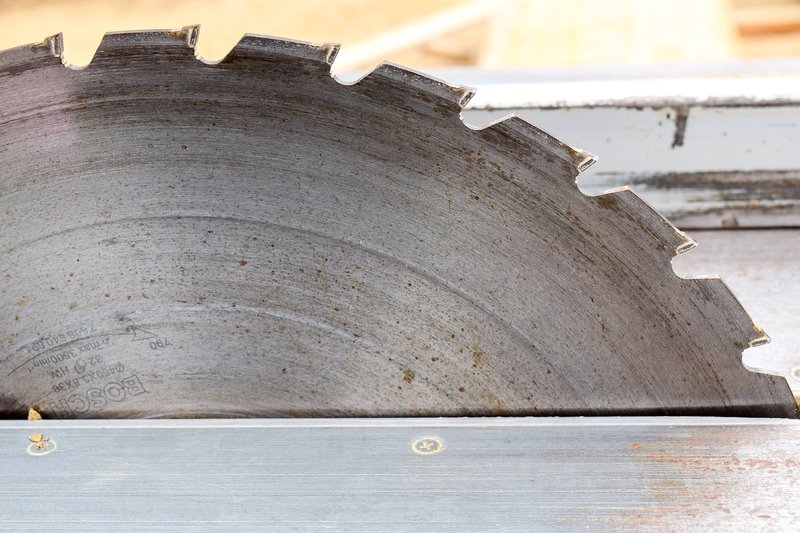How to build a long, straight, and sturdy fence for a table saw with a long table. This fence could be used for ripping long stock on a standard contractor saw or for cutting flats on logs on a saw with a large blade.
Do you need an extra-long fence that will stand up to heavy use? The DIY table saw fence described in this article is simple to build and we show you how to make it up to 24 feet long.
Most people don’t need a fence that long but we’ll show you how and you can customize the length to fit your needs.

The fence on a table saw acts as a guide for the piece of wood being cut. If you have long stock to rip, extending the fence or using a longer fence is a good idea.
The more of the stock you can keep against the fence, the easier it is to make a straight cut. Let’s take a look at how to make a DIY extended fence for a table saw.
Read Also:
The fence in this article is 24 feet long, but you can make it longer or shorter as needed. The technique is the same and we’re using 24 feet to demonstrate that technique.
Make a DIY table saw fence as straight as possible. Use the factory cut edge of a piece of plywood as a straightedge to align the pieces for the base of the fence.
Wherever you join two lengths of wood for the base of the fence, use a factory cut edge for the butt plate and another one to align it.
Purchase two sheets of a 4-by-8 foot, 3/4-inch thick birch plywood, and have the home center or lumberyard rip two, 12 1/2-inch wide pieces off the factory edges of both sheets. A 12-inch wide rip cut is the narrowest cut most home centers will do for safety reasons.
Having the home center or lumber yard make these four cuts will save you some trouble. Be sure to mark the factory edges before they make the cuts.
Set your table saw up for a 6-inch wide rip cut. Place the factory edge against the fence and rip eight, 6-inch wide pieces from the four with the factory edges.
Cut two additional 6-inch wide strips off of the leftover sheets. It is important that all the pieces are the same width rather than one piece at 6 inches and one at 5 15/16 inches.
Place two base pieces end-to-end with the factory cut edges on the same side. Place the alignment piece with the factory edge against the two base pieces and clamp it in place with bar clamps.
Spread yellow wood glue over the two base pieces for 4 feet on either side of the butt joint. Lay a butt plate over the two end-to-end pieces with half of the strip overlaying each piece.
Add a third base piece to the assembly, in the same way, using a butt plate to join it to the first two pieces. Give the glue an hour to set up.
While the glue dries, make 15 fence support brackets. The brackets are right triangles with two 45-degree angles and one 90-degree angle.
The two short sides are 6-inches long. Accurately cutting the angles is essential. Cut 1 1/2 inches off one of the 45-degree corners on each piece. (See Drawing.)
Stand the base assembly on the factory edge. Glue and screw the fence support brackets to the base assembly, spacing support brackets about 15-inches apart.
Where two face pieces will meet, use two brackets about 1-inch apart. Leave a 4-inch space at the end of the base assembly so you can clamp it to the saw table.
Use yellow wood glue and 1 1/2 inch long #8 wood screws to glue and screw the faceplates to the fence support brackets and the base assembly to complete your DIY extended fence for a table saw.
Thin stock can become wedged underneath a fence if there is a gap. Ensure your extended table is flat and flush with the saw table and there are no gaps between the fence and the table.
A piece of stock that becomes wedged while cutting can turn a relatively safe operation into a deadly one.
Always firmly clamp the extended fence to the extended saw table so it can’t move.